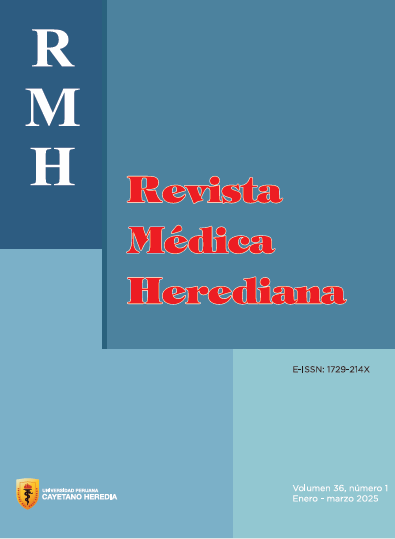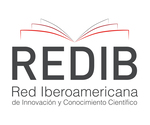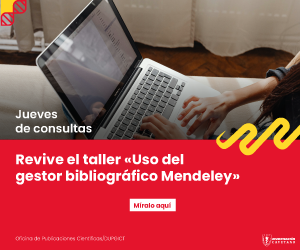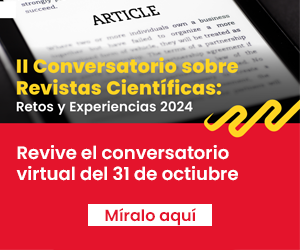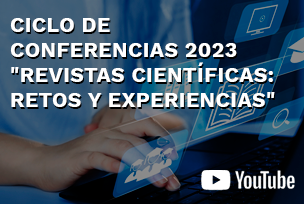Myths and beliefs about diabetic foot: A cultural study in outpatients with type 2 diabetes at the Hospital Regional de Lambayeque
DOI:
https://doi.org/10.20453/rmh.v36i1.5439Keywords:
Diabetic foot, culture, fear, patient education, interview, traditional medicineAbstract
Objective: To analyze and explore beliefs, myths, and fears about the care of diabetic foot (DF) in a hospital in northern Peru. Methods: A qualitative and analytic study was carried out using semi-structural interviews applied to patients recruited through a convenient sample limited by thematic saturation among individuals attending the Diabetic Foot Unit of Hospital Regional Lambayeque. The results were registered, transcribed, coded, and categorized manually with thematic analysis. Results: Ten individuals were interviewed. Three categories were obtained: a. myths and beliefs about the genesis of DF; unknown and spontaneous origin, the religion imposes the belief that DF are the results of divine punishment, magico-religious causes (witchcraft), or inadvertent lesions. B. myths and beliefs around management: avoid food that exacerbates DF, use of anti-inflammatory herbs, and request for a sorcerer consultation or auto prescription. C. living with fears and anxiety: amputation and limitations. Conclusion: Myths and beliefs were identified that need to be taken into account by healthcare professionals to improve the management of DF.
Downloads
References
Pop-Busui R, Boulton AJ, Feldman EL, Bril V, Freeman R, Malik RA, et al. Diabetic Neuropathy: A Position Statement by the American Diabetes Association. Diabetes Care. 2017; 40:136–154. doi: 10.2337/dc16-2042.
Armstrong DG, Boulton AJM, Bus SA. Diabetic Foot Ulcers and Their Recurrence. N Engl J Med. 2017; 376:2367–2375. doi: 10.1056/NEJMra1615439.
Walsh JW, Hoffstad OJ, Sullivan MO, Margolis DJ. Association of diabetic foot ulcer and death in a population-based cohort from the United Kingdom. Diabet Med. 2016; 33:1493–1498. doi: 10.1111/dme.13054.
Bandyk DF. The diabetic foot: Pathophysiology, evaluation, and treatment. Semin Vasc Surg. 2018 Jun-Dec; 31(2-4):43-48. doi: 10.1053/j.semvascsurg.2019.02.001.
Bonnet JB, Sultan A. Social Deprivation, Healthcare Access and Diabetic Foot Ulcer: A Narrative Review. J Clin Med. 2022 Sep 15;11(18):5431. doi: 10.3390/jcm11185431.
Zhang P, Lu J, Jing Y, Tang S, Zhu D, Bi Y. Global epidemiology of diabetic foot ulceration: a systematic review and meta-analysis †. Ann Med. 2017 Mar; 49(2):106-116. doi: 10.1080/07853890.2016.1231932
Schaper NC, van Netten JJ, Apelqvist J, Bus SA, Hinchliffe RJ, Lipsky BA; IWGDF Editorial Board. Practical Guidelines on the prevention and management of diabetic foot disease (IWGDF 2019 update). Diabetes Metab Res Rev. 2020 Mar;36 Suppl 1: e3266. doi: 10.1002/dmrr.3266.
Dorresteijn JA, Kriegsman DM, Assendelft WJ, Valk GD. Patient education for preventing diabetic foot ulceration. Cochrane Database Syst Rev. 2014 Dec 16;2014(12):CD001488. doi: 10.1002/14651858.CD001488.pub5.
Goodall RJ, Ellauzi J, Tan MKH, Onida S, Davies AH, Shalhoub J. A Systematic Review of the Impact of Foot Care Education on Self Efficacy and Self Care in Patients with Diabetes. Eur J Vasc Endovasc Surg. 2020 Aug;60(2):282-292. doi: 10.1016/j.ejvs.2020.03.053.
Oni D. Foot Self-Care Experiences Among Patients with Diabetes: A Systematic Review of Qualitative Studies. Wound Manag Prev. 2020 Apr;66(4):16-25. doi: 10.25270/wmp.2020.4.1625.
Green-Morris G. An evaluation of the effectiveness of foot care education in rural clinics. J Diabetes Metab Disord. 2019 May 29;18(1):207-215. doi: 10.1007/s40200-019-00407-0.
Helman C. Culture, Health and Illness. London: Butterworth & Co (Publishers), Ltd; 2007. doi: 10.1201/b13281
Wah Oo HS, Nau K, Kyi KM. The cultural practices of Bamar diabetic patients: An ethnographic study. Heliyon 2020;6(2): e03267. doi: 10.1016/j.heliyon. 2020.e03267.
Weiler DM. The socio-cultural influences and process of living with diabetes for the migrant Latino adult. Doctoral Electronic dissertation in internet. USA. University of Arizona. 2007 [cited June 20, 2023]; available at: https://repository.arizona.edu/handle/10150/195127.
Hjelm K, Beebwa E. The influence of beliefs about health and illness on foot care in ugandan persons with diabetic foot ulcers. Open Nurs J. 2013 Aug 20; 7:123-32. doi: 10.2174/1874434601307010123.
Coffey L, Mahon C, Gallagher P. Perceptions and experiences of diabetic foot ulceration and foot care in people with diabetes: A qualitative meta-synthesis. Int Wound J. 2019 Feb;16(1):183-210. doi: 10.1111/iwj.13010.
León-Jimenez F, Torres Samamé L, Altamirano-Cardozo L, Navarro-Ríos APS, Meléndez-Ramírez GA. Seguimiento de pacientes con pie diabético en un hospital de alta complejidad del norte del Perú. An Fac med. 2021;82(2):124-30. doi: https://doi. org/10.15381/anales. v82i2.20103.
Aimi A, Perassi E. Herencia Muchik en el bosque de Pómac. Primera edición. Lima, Perú: Ledizioni. 2015. Available at: https://air.unimi.it/bitstream/2434/289994/2/HERENCIA-MUCHIK_web.pdf. Date of access: June 15, 2023.
O'Brien BC, Harris IB, Beckman TJ, Reed DA, Cook DA. Standards for reporting qualitative research: a synthesis of recommendations. Acad Med. 2014; 89(9):1245-1251. doi: 10.1097/ACM.0000000000000388.
Braun, V; Clarke, V. Using thematic analysis in psychology. Qual Res Psychol, 2006; 3(2):77–101. doi: 10.1191/1478088706qp063oa.
Taipe N. Los mitos. Consensos, aproximaciones y distanciamientos teóricos. Gaz Antropol. 2004; 20 articulo 16.
Diez-Patricio A. Ideas y creencias. Rev Asoc Esp Neuropsiq. 2017; 37(131): 127-143. doi: 10.4321/S0211-57352017000100008.
Angela M, Beattie R, Campbell R, Vedhara K. ‘Whatever I do it’s a lost cause." The emotional and behavioural experiences of individuals who are ulcer free living with the threat of developing further diabetic foot ulcers: a qualitative interview study. Heal Expect. 2014;17(3):429–39: doi: 10.1111/j.1369-7625.2012.00768. x.
Bonner T, Harvey IS, Sherman L. A Qualitative Inquiry of Lower Extremity Disease Knowledge Among African Americans Living With Type 2 Diabetes. Health Promot Pract. 2017; 18(6):806–13. doi: 10.1177/1524839916688867.
Sayampanathan AA, Cuttilan AN, Pearce C. Barriers and enablers to proper diabetic foot care amongst community dwellers in an Asian population: a qualitative study. Ann Transl Med. 2017;5(12):254–254. doi: 10.21037/atm.2017.04.31
Salehi S, Ghodousi A, Ojaghloo K. The spiritual experiences of patients with diabetes- related limb amputation. Iran J Nurs Midwifery Res. 2012 Mar [Cited June 20, 2023];17(3):225-8. Available at: https://pmc.ncbi.nlm.nih.gov/articles/PMC3696216/pdf/IJNMR-17-225.pdf
Hjelm K, Apelqvist J. Influence of beliefs about health and illness on self-care and care-seeking in foreign-born people with diabetic foot ulcers: dissimilarities related to origin. J Wound Care. 2016;25(11):602–16. doi: 10.12968/jowc.2016.25.11.602
Olowo S, Iramiot JS, Ssenyonga L. Knowledge of diabetic foot complication, self-care beliefs and practices among patients attending a tertiary hospital in Eastern Uganda. IJANS. 2022; 16:100402. doi: 10.1016/j.ijans.2022.100402
Álvarez-Najar P, Valderrama-Zanabria M, Peña-Pita A. Creencias y prácticas en el cuidado de la diabetes. Duazary. 2020; 17(1):74-86. doi: 10.21676/2389783X.3218.
Frisancho Velarde O. Concepción mágico-religiosa de la Medicina en la América Prehispánica. Acta méd. Peruana. 2012 Apr; 29(2):121-127. Disponible en: http://www.scielo.org.pe/scielo.php?script=sci_arttext&pid=S1728-59172012000200013&lng=es.
Alkhatib A, Tsang C, Tiss A, Bahorun T, Arefanian H, Barake R, Khadir A, Tuomilehto J. Functional Foods and Lifestyle Approaches for Diabetes Prevention and Management. Nutrients. 2017 Dec 1;9(12):1310. doi: 10.3390/nu9121310.
Real Academia Española. Diccionario de la lengua española. Enconar. [Cited March 4, 2023]; Available in: https://dle.rae.es/enconar#OFGq75g.
Cucat-Muñoz R. Mitos y Costumbres en el cuidado de heridas en pobladores de zonas rurales de Monsefú, en el período julio-diciembre 2016. Tesis de Pregrado para optar el Grado de Bachiller en Medicina Humana. Lima, Perú. Universidad San Martín de Porres. 2018. [Cited March 4, 2023]; Available in: https://hdl.handle.net/20.500.12727/3192.
Taheri M, Amiri-Farahani L. Anti-Inflammatory and Restorative Effects of Olives in Topical Application. Dermatol Res Pract. 2021 Jun 26; 2021:9927976. doi: 10.1155/2021/9927976
Amiri-Farahani L, Sharifi-Heris Z, Mojab F. The Anti-Inflammatory Properties of the Topical Application of Human Milk in Dermal and Optical Diseases. Evid Based Complement Alternat Med. 2020 Jul 23; 2020:4578153. Doi: 10.1155/2020/4578153
Najafian Y, Khorasani ZM, Najafi MN, Hamedi SS, Mahjour M, Feyzabadi Z. Efficacy of Aloe vera/ Plantago Major Gel in Diabetic Foot Ulcer: A Randomized Double-Blind Clinical Trial. Curr Drug Discov Technol. 2019;16(2):223-231. doi: 10.2174/1570163815666180115093007.
Ghanadian M, Soltani R, Homayouni A, Khorvash F, Jouabadi SM, Abdollahzadeh M. The Effect of Plantago major Hydroalcoholic Extract on the Healing of Diabetic Foot and Pressure Ulcers: A Randomized Open-Label Controlled Clinical Trial. Int J Low Extrem Wounds. 2022 Jan 19:15347346211070723. Doi: 10.1177/15347346211070723.
Arellano-Jiménez PT. El libro verde. Guía de recursos terapéuticos vegetales. Lima: Instituto Nacional de Salud. [Cited March 4, 2023]; Available in: https://repositorio.ins.gob.pe/bitstream/handle/20.500.14196/173/CENSI-0002.pdf?sequence=1&isAllowed=y.
Viteri-Toro MF, Álvarez Velasco CT. Estudio de los usos sociales, rituales y actos festivos entorno al cuy en Tungurahua. Tesis de pregrado para optar el grado de Bachiller en Turismo y Hotelería. Ambato, Ecuador. Universidad Técnica de Ambato. 2019. [Cited March 7, 2023]; Available at: https://repositorio.uta.edu.ec/server/api/core/bitstreams/8a552275-d1ff-4aea-a0b4-1a3b24f0f546/content
Saldaña-Flores D, Villalobos-Ticliahuanca G, Ballón-Manrique B, León-Jiménez F. Frecuencia y características de la automedicación en pacientes con cefalea en atención primaria en Lambayeque, Perú. Rev Med Hered. 2016; 27:230-236. doi: 10.20453/rmh.v27i4.2992
Mogre V, Johnson NA, Tzelepis F, Shaw JE, Paul C. A systematic review of adherence to diabetes self-care behaviours: Evidence from low- and middle-income countries. J Adv Nurs. 2019 Dec;75(12):3374-3389. Doi: 10.1111/enero 14190
Wukich DK, Raspovic KM, Suder NC. Patients With Diabetic Foot Disease Fear Major Lower-Extremity Amputation More Than Death. Foot Ankle Spec. 2018;11(1):17–21. doi: 10.1177/1938640017694722.
Lewis C. Healthcare beliefs of Indian patients living with leg and foot ulcers. Br J Nurs. 2007 Jun 14-27;16(11): S22-6. doi: 10.12968/bjon.2007.
Organización mundial de la Salud. Nota de prensa. La COVID 19 afecta significativamente a los servicios de salud relacionados con las enfermedades no trasmisibles. 1 de junio 2020. [Cited June 24, 2022]; Available in: https://www.who.int/es/news/item/01-06-2020-covid-19-significantly-impacts-health-services-for-noncommunicable-diseases.
Varaei S, Salsali M, Cheraghi MA. Implementation of evidence-based nursing practice for diabetic patients: an Iranian experience. Int J Nurs Pract. 2013 Sep;19 Suppl 3:73-80. doi: 10.1111/ijn.12170:
Subrata SA, Phuphaibul R. Diabetic foot ulcer care: a concept analysis of the term integrated into nursing practice. Scand J Caring Sci. 2019 Jun;33(2):298-310. doi: 10.1111/scs.12645.
Walker LO, Avant KC. Strategies for Theory Construction in Nursing Concept Development. 3rd Edition. Appleton & Lange, Norwalk, 1995. 35-78.
Subrata SA, Phuphaibul R, Kanogsunthornrat N, Siripitayakunkit A. ADIE - Nursing Interventions of Diabetic Foot Ulcer: An Integrative Review of the Literature. Curr Diabetes Rev. 2019;16(1):40-51. doi: 10.2174/1573399815666190307164119.
Published
How to Cite
Issue
Section
License
Copyright (c) 2025 Eglee Tais Córdova López , Blanca Katiuzka Loayza-Enríquez , Franco León Jimenez

This work is licensed under a Creative Commons Attribution 4.0 International License.
Authors assign their rights to the RMH so that may disseminate the article through the means at their disposal. The journal will provide forms of affidavit of authorship and authorization for the publication of the article, which shall be submitted with the manuscript. Authors retain the right to share, copy, distribute, perform and publicly communicate their article, or part of it, mentioning the original publication in the journal.
